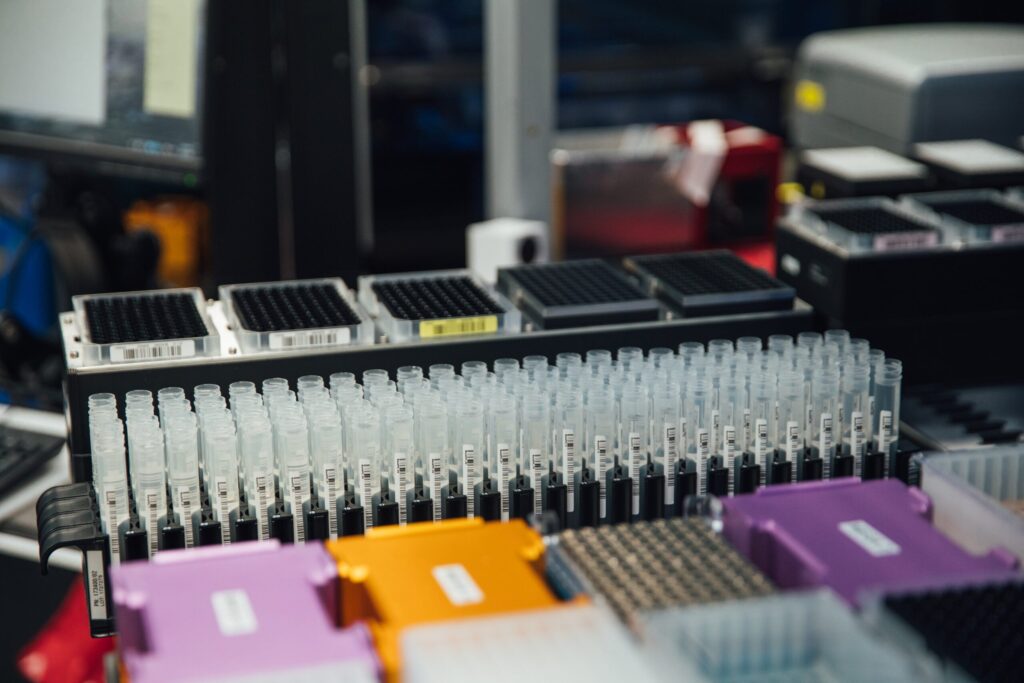News & Articles
Color and researchers from Massachusetts General Hospital and the Broad Institute discover key finding to determine risk of genomic diseases
Color

Today, the journal Nature Communications published new research, led by scientists from Color, Massachusetts General Hospital and the Broad Institute of MIT and Harvard, that sheds light on the risk of developing three diseases: coronary artery disease, breast cancer and colorectal cancer. Their research shows that in order to fully understand the risk of developing these diseases, individuals and their healthcare providers should consider more genetic information than previously thought.
Rather than only focusing on known mutations strongly correlated with very high risk of a certain disease, genetic testing companies such as Color can also test for the many small changes across the genome that cumulatively affect risk. This could give a more accurate assessment of a person’s risk for developing a certain disease.
“This research has real clinical implications for genome interpretation,” said Amit V. Khera, associate director of the Broad Institute’s Program in Medical and Population Genetics and leader of a research group within the Center for Genomic Medicine at Massachusetts General Hospital and senior author of the paper. “We’ve found that the traditional approach of only looking for monogenic risk variants misses an important part of the picture. A person’s polygenic risk also plays a crucial role in predicting the development of disease. I suspect that evaluating both will soon become standard in clinical practice.”
Khera has already started tailoring patients’ clinical care based on their genetics at Massachusetts General Hospital, working with a team of geneticists and genetic counselors in the hospital’s Preventive Genomics Clinic. The clinic will begin offering a clinical test developed by Color that assesses both monogenic and polygenic risk for heart disease this fall.
For the study, researchers focused on breast cancer, coronary artery disease, and colorectal cancer because each disease is associated with what the Centers for Disease Control and Prevention considers a tier 1 genomic condition, meaning there are specific genetic mutations associated with higher risk for developing the condition. For example, there are specific mutations associated with familial hypercholesterolemia (FH), a condition that prevents the body from clearing cholesterol from the bloodstream. People with these mutations have a much higher risk of developing coronary artery disease — the disease process leading to heart attacks — at a young age than those without the mutation. Likewise, people with specific mutations that cause hereditary breast and ovarian cancer or a condition called Lynch syndrome have a high risk of developing breast cancer or colon cancer, respectively.
The relationship between the mutations that cause these three genomic conditions and the risk of developing each disease is relatively well understood. But until now, few researchers have investigated how the interplay between these monogenic variants and someone’s polygenic risk affects the likelihood of developing disease.
“Think about a monogenic variant as a brick,” said Julian Homburger, a Color data scientist and co-first author of the paper. “A polygenic risk score, then, is like stacking sheets of paper. You can still get to the same size — in this case, the likelihood of developing a disease — it’s just a different mechanism. And, what we show is that if you have both of these, they stack on top of each other and contribute to an even greater risk.”
In this study, the researchers reviewed genetic information from 80,928 individuals who either participated in case-controlled Color or U.K. Biobank studies. They found that the presence of monogenic variants and a patient’s polygenic risk — considered low, medium, or high based on previously developed scores — both significantly affect the likelihood of developing a disease associated with a tier 1 genomic condition. For example, a carrier of a mutation associated with FH who also had a high polygenic risk score had an estimated risk of developing coronary artery disease of 78% versus only about 17% for a mutation carrier with a low polygenic risk score.
“These are separate factors that contribute to a person’s risk,” said Alicia Zhou, Chief Science Officer at Color and co-author of the paper. “In other words, someone with a mutation that causes FH, for example, who has a low polygenic risk score could have a risk of developing coronary artery disease that actually approaches the population average. But someone with the FH mutation and a high polygenic risk score would be at very high risk.”
The next logical step, she says, is that these patients would be monitored closely, perhaps through earlier and more frequent screening. The goal of the research is to ultimately improve treatment protocols and clinical care, which could start to happen as soon as this Fall when the new clinical test is available within clinics at Massachusetts General Hospital.
“The current approach to screening for genomic conditions is fairly crude,” Zhou said. “With better information about the risk of genomic diseases, we can refine screening and treatment for people, and hopefully improve patient outcomes.”
About Color
Color is a leader in distributed healthcare and clinical testing. Color makes population-scale healthcare programs accessible, convenient, and cost-effective for everyone. Color works with health systems, employers, and national health initiatives around the world including the million-person All of Us Research Program by the National Institutes of Health. For more information about Color and its response to COVID-19, visit www.color.com.



